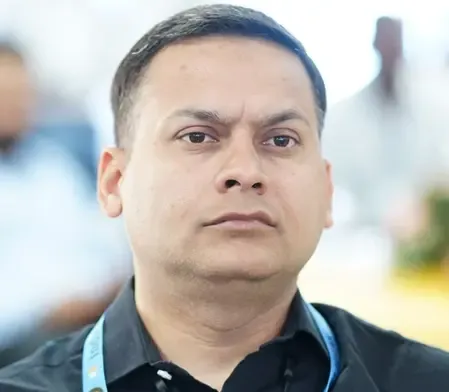Is Tejashwi Living in Lalu Prasad's Shadow?

Synopsis
Key Takeaways
- Tejashwi Yadav aspires to be the next Chief Minister of Bihar.
- He navigates family dynamics and a complex political legacy.
- His strategies include building alliances and regaining voter trust.
- The upcoming elections are critical for his political identity.
- Tejashwi aims to address the caste dynamics in Bihar.
New Delhi, Oct 29 (NationPress) When his estranged elder sibling Tej Pratap Yadav remarked that Rashtriya Janata Dal (RJD) leader Tejashwi was merely existing in their father Lalu Prasad’s shadow, the younger brother might have silently agreed as his dreams of becoming Bihar’s next Chief Minister are intricately linked to that legacy.
Earlier this year, the RJD national executive committee passed a resolution that elevated Tejashwi's authority to levels comparable to that of the party’s founder and president, Lalu. This decision clarified which of Lalu's nine children would be entrusted with carrying forward the family legacy.
Of Lalu and Rabri's offspring, four have shown political inclination, with Misha Bharti backing Tejashwi in the ongoing family dispute, while the younger Rohini Acharya has sided with Tej Pratap.
Rohini, who ran unsuccessfully as an RJD candidate in Bihar’s Saran Lok Sabha constituency in 2024, has openly expressed her dissatisfaction with their father’s preference for Tejashwi. She has also highlighted her personal sacrifice of donating a kidney to Lalu.
Tejashwi’s rise in the RJD has been marked by familial discord that has become more pronounced as the elections approach. His perseverance and resolve in navigating challenges within the family and party have been reflective in external negotiations, particularly regarding seat-sharing. Despite having less experience than many of his political allies, he has adeptly managed discussions, holding firm against their demands.
While he may lack his father's rustic humor, this has not impeded him from eliciting smiles from his partners, albeit sometimes reluctantly. This strategy paid off in 2020 when the Mahagathbandhan narrowly missed a majority by just a dozen seats, with the RJD emerging as the largest party, securing 75 out of 243 Assembly constituencies in Bihar. He has embraced Lalu’s legacy of leveraging alliances to confront stronger adversaries.
In 1999, when Sonia Gandhi was poised to form the government but faced opposition from Mulayam Singh Yadav, Lalu was surprisingly more open to collaborating with Congress, despite their historical rivalries. With only seven Lok Sabha seats, the Bihar stalwart sought to unify regional leaders with Gandhi.
During the 2004 Lok Sabha elections, Lalu's RJD won 24 seats, significantly enhancing his influence in the new government formation, famously proclaiming, “I will play the role of queenmaker” in support of the Congress.
As the 2025 elections loom, Tejashwi has ruffled some feathers among parties like the All India Majlis-E-Ittehadul Muslimeen (AIMIM) and the Jharkhand Mukti Morcha (JMM), yet he remains focused on preserving the RJD’s voter base. He is wary of the implications of bringing AIMIM into the fold, which could be perceived as a Muslim overreach that may alienate Yadav voters. The 2022 caste census report indicates around 17.70% Muslim representation and about 14.3% Yadav, while he is aiming to penetrate the Backward (OBC) and Extremely Backward Class (EBC) demographics that comprise roughly 63.1% of Bihar’s population.
The RJD, once a favorite among these groups, has seen OBC support wane, as it is now perceived as leaning towards Muslim-Yadav support, while EBC votes have shifted toward Bihar’s ruling National Democratic Alliance (NDA) led by Nitish Kumar’s Janata Dal (United). He is thus striving to uphold Lalu’s legacy of prioritizing “Mandal” over “Kamandal.”
Lalu’s rise was fundamentally tied to the political mobilization surrounding the Mandal Commission’s recommendations, which he wielded against 'Kamandal' politics, perceived to favor majoritarian, upper-caste-centric Hindutva agendas. This consolidation helped Lalu dismantle the rising Communist forces that focused on 'class struggle' rather than caste dynamics.
However, Tejashwi inherits the shadow of “jungle raaj” synonymous with the Lalu-Rabri era, a point frequently raised by critics advocating for “good governance” under Nitish Kumar. This is a critical aspect of his father’s legacy that the young Yadav is striving to transcend.









